Secure EKS Cluster
 KORLA GOUTHAM
KORLA GOUTHAM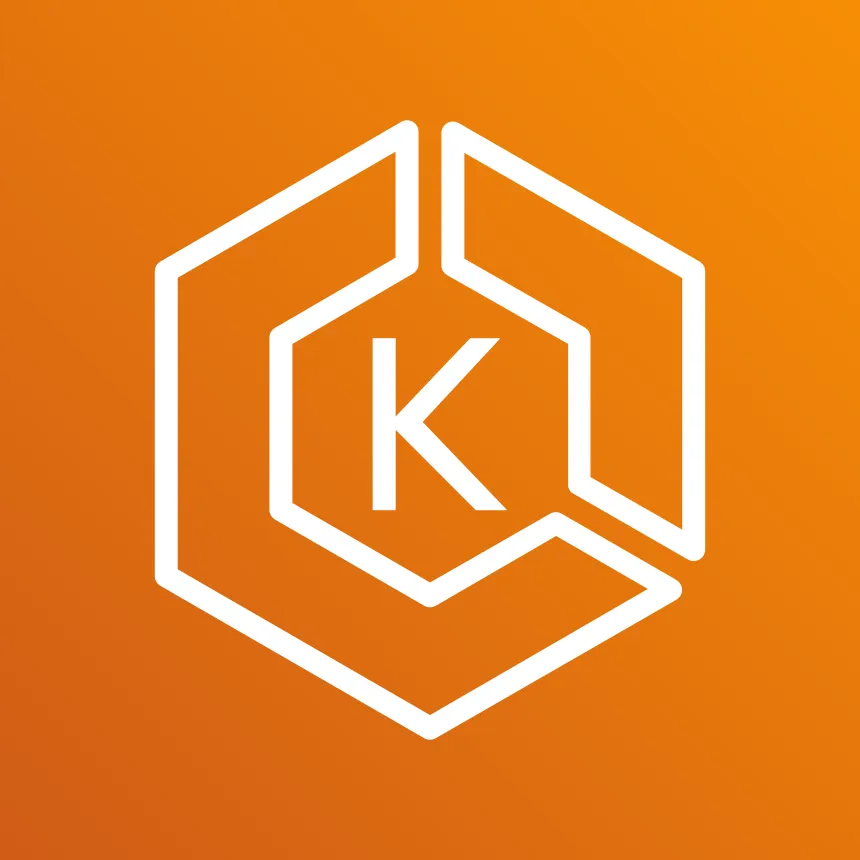
Hello Every One In this blog, I would like to explain my simple EKS project.
I have created an EKS cluster with private access using config file and deployed my simple NGINX pods in the private subnets. Additionally, I deployed the NGINX Ingress Controller pod, which creates an NLB in a public subnet. I have secured my ingress with a TLS certificate from Let's Encrypt. I obtained a free domain from Infinityfree Instead of using the AWS VPC CNI, I opted for Calico networking. I have used VPC Endpoints to connect AWS ECR to the pods which use image deployed on ECR so that the traffic will stay in AWS itself. There are advantages to using Calico over AWS CNI, which I will discuss later.
Creating EKS Cluster using Config file
apiVersion: eksctl.io/v1alpha5
kind: ClusterConfig
metadata:
name: secure-eks-cluster-1
region: ap-south-1
privateCluster:
enabled: true
vpc:
id: vpc-0696a952afbedc41e
subnets:
public:
ap-south-1a:
id: subnet-077f42f899cebc65a7
ap-south-1b:
id: subnet-054707279b5eb56a8
private:
ap-south-1a:
id: subnet-048bc3f89b5eb56a8
ap-south-1b:
id: subnet-054707279cebc65a7
ap-south-1c:
id: subnet-048bnjc5b81003279
Eks cluster will only be created if the VPC has certain configurations.
I have deployed a Cloud9 instance in the same VPC so that I could able to communicate to EKS having a private access.
Install the VPC using the cloud formation template available . EKS Cluster with private access will be created.
Calico CNI
In order to generate a Calico networking delete already existing aws vpc-cni daemon set
kubectl delete daemonset -n kube-system aws-node
Now we have to install Calico CNI using Helm
helm repo add projectcalicohttps://docs.tigera.io/calico/charts
helm repo update
helm install calico projectcalico/tigera-operator --version v3.28.0
apiVersion: eksctl.io/v1alpha5
kind: ClusterConfig
metadata:
name: secure-eks-cluster-1
region: ap-south-1
nodeGroups:
- name: ng-private
instanceType: t3.medium
desiredCapacity: 2
privateNetworking: true
maxPodsPerNode: 100
ssh:
allow: true
publicKeyName: my-keypair # Replace with your SSH key pair name
The node group has been launched in the private subnet because of the --node-private-networking option.
Setting --max-pods-per-node=100 is necessary because, without it, EKS limits the number of pods on a node based on the node type. If we don't specify this, it behaves like the VPC CNI, which means that even if the node resources are not exhausted, it will limit the number of pods. VPC CNI creates many secondary IPs based on the node type, allowing that many pods to be scheduled on the node. However, if we use Calico, the maximum number of pods is scheduled on the node until the resources are exhausted.
To apply our own networking rules, we need to download calicoctl
https://docs.tigera.io/calico/latest/operations/calicoctl/install
#pool.yaml
apiVersion: projectcalico.org/v3
kind: IPPool
metadata:
name: pool2
spec:
cidr: 10.0.0.0/16
ipipMode: Always
natOutgoing: true
Using calicoctl apply -f pool.yaml now kubernetes use 10.0.0.0/16 CIDR to pods , services etc..
Deploying Nginx Pods
Now I deployed a 2 simple nginx deployments and attached 2 services to it.
POD-1.yaml
Nginx Image is deployed on ecr
apiVersion: apps/v1
kind: Deployment
metadata:
name: nginx-dev
spec:
replicas: 1
selector:
matchLabels:
app: dev
template:
metadata:
labels:
app: dev
spec:
containers:
- name: nginx-pod
image: AWS-ACCOUNT-ID.dkr.ecr.ap-south-1.amazonaws.com/nginx
command: ["/bin/sh"]
args: ["-c", "echo 'Hello, this is dev page' > usr/share/nginx/html/index.html && exec nginx -g 'daemon off;'"]
ports:
- containerPort: 80
---
apiVersion: v1
kind: Service
metadata:
name: devsvc
spec:
selector:
app: dev
ports:
- port: 80
targetPort: 80
POD-2.yaml
apiVersion: apps/v1
kind: Deployment
metadata:
name: nginx-test
spec:
replicas: 1
selector:
matchLabels:
app: test
template:
metadata:
labels:
app: test
spec:
containers:
- name: nginx-pod
image: AWS-ACCOUNT-ID.dkr.ecr.ap-south-1.amazonaws.com/nginx
command: ["/bin/sh"]
args: ["-c", "echo 'Hello, this is test page' > usr/share/nginx/html/index.html && exec nginx -g 'daemon off;'"]
ports:
- containerPort: 80
---
apiVersion: v1
kind: Service
metadata:
name: testsvc
spec:
selector:
app: test
ports:
- port: 80
targetPort: 80
Lets us use Endpoints to connect to ECR so that traffic will stay with in VPC
Creating Endpoints
I have already written a detailed blog on endpoints. Basically Endpoints are used to connect one aws service to other (especially when one aws service is in private subnet) with out the NAT Gate way.
First We have to create a ecr endpoint and place in the private subnets

Then Docker endpoint as ecr use docker commands

Then S3 Gateway Endpoint as Container Image layers are stored in S3.

Now pods and services are up and running. Next comes to ingress.
Nginx Ingress Controller
Deploy a ingress controller pod which monitors ingress rules.
I have chosen nginx ingress controller. I have deployed using helm.
helm repo add ingress-nginx https://kubernetes.github.io/ingress-nginx
helm repo update
helm install my-ingress ingress-nginx/ingress-nginx \
--namespace ingress-nginx \
--create-namespace \
--set controller.service.type=LoadBalancer \
--set controller.service.annotations."service\.beta\.kubernetes\.io/aws-load-balancer-type"="nlb"
When we try to create ingress resource we get this error
Error from server (InternalError): Internal error occurred: failed calling webhook "myservice.mynamespace.svc":Post"https://myservice.mynamespace.svc:443/mutate?timeout=30s": Address is not allowed
When using EKS with only Calico CNI the Kubernetes API server on the control plane (managed by AWS) cannot reach webhooks that use a service pointing to pods on Calico pod network.

I used a setting “hostNetwork: true” to the nginx controller pod so it exposes a port in every Node. This way the Kubernetes service pointing to the pod would have <nodeIP:hostPort> in the endpoints.
As the node IP is part of the VPC the EKS Master can reach it out successfully.
Note that you have containerPort and hostPort in the pod/spec/container/ports but containerPort must match hostPort.
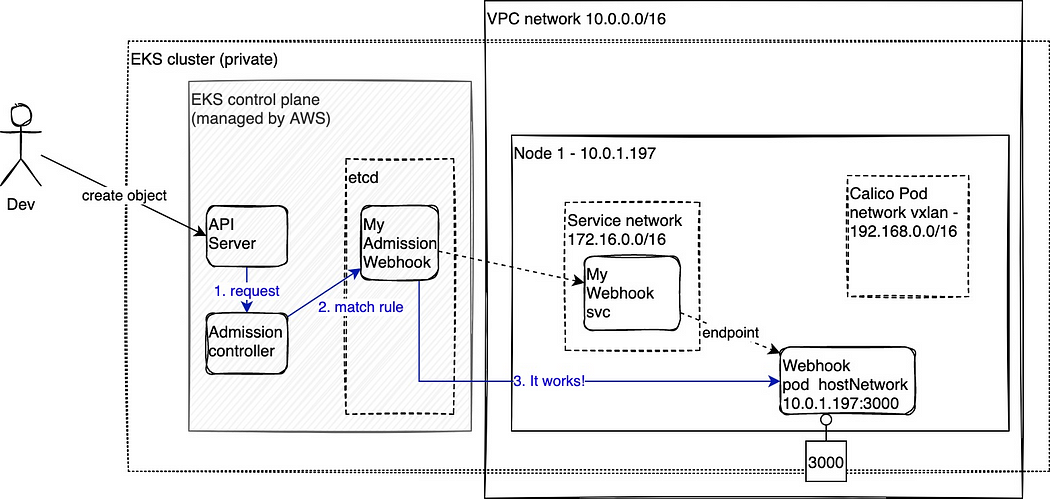
Images copied from @denisstortisilva medium blog
So in values.yaml file I have changed host Network to true and hostPort enabled for nginx ingress controller pod.
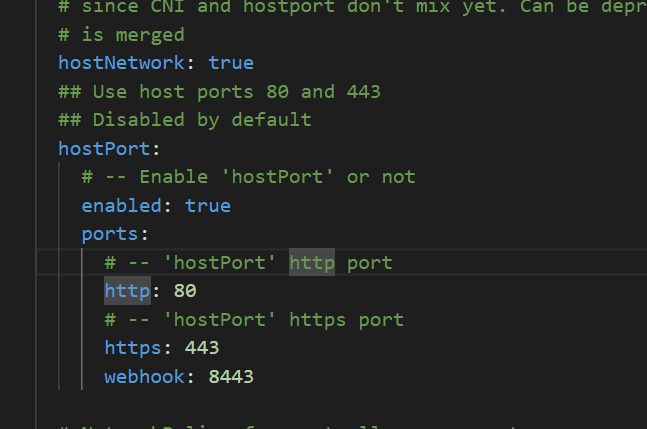
Now I saved from error and when tried to create a ingress resource successfully created.
SSL/TLS certificate
Now I have secured ingress using SSL certificate for my domain.
I got a free domain from dash.infinityfree.com . I have created a CName record there itself.
C Name record means when we hit domain there must be record in DNS, where this domain has to transfer the traffic to . Here it has to transfer to Network Load balancer right.
Install the cert-manger which provides the certificates using helm.
helm repo add jetstack https://charts.jetstack.io --force-update
helm install \
cert-manager jetstack/cert-manager \
--namespace cert-manager \
--create-namespace \
--version v1.15.1 \
--set crds.enabled=true
Now a bunch of crds and cluster role bindings, cluster roles get installed.
Self Signed Certificates
Now lets try to generate a self signed certificates and use it with ingress.
To do this firstly generate a issuer and certificate request. This request will be fulfilled by issuer and then cert-manager generates a secret and this secret which represents the self signed certificate has to be used in ingress rules along with our domain.
#Issuer.yaml
apiVersion: cert-manager.io/v1
kind: Issuer
metadata:
name: test-selfsigned
namespace: cert-manager-test
spec:
selfSigned: {}
# Certificate _request.yaml
apiVersion: cert-manager.io/v1
kind: Certificate
metadata:
name: selfsigned-cert
namespace: cert-manager-test
spec:
dnsNames:
- devops.goutham.wuaze.com
secretName: selfsigned-cert-tls
issuerRef:
name: test-selfsigned
We are asking for this devops.goutham.wuaze.com domain generate a secret named selfsigned-cert-tls in namespace cert-manager-test to issuer.
Issuer then creates the certificate then cert-manager places the certificate as secret in namespace cert-manager-test.
Lets use the secret in ingress rules.
apiVersion: networking.k8s.io/v1
kind: Ingress
metadata:
name: my-ingress
namespace: default
annotations:
nginx.ingress.kubernetes.io/rewrite-target: /$2
spec:
ingressClassName: nginx
tls:
- hosts:
- devops.goutham.wuaze.com
secretName: selfsigned-cert-tls
defaultBackend:
service:
name: defaultservice
port:
number: 80
rules:
- host: devops.goutham.wuaze.com
http:
paths:
- path: /dev
pathType: Prefix
backend:
service:
name: devsvc
port:
number: 80
- path: /test
pathType: Prefix
backend:
service:
name: testsvc
port:
number: 80
As our certificate is not trusted we will get this page.
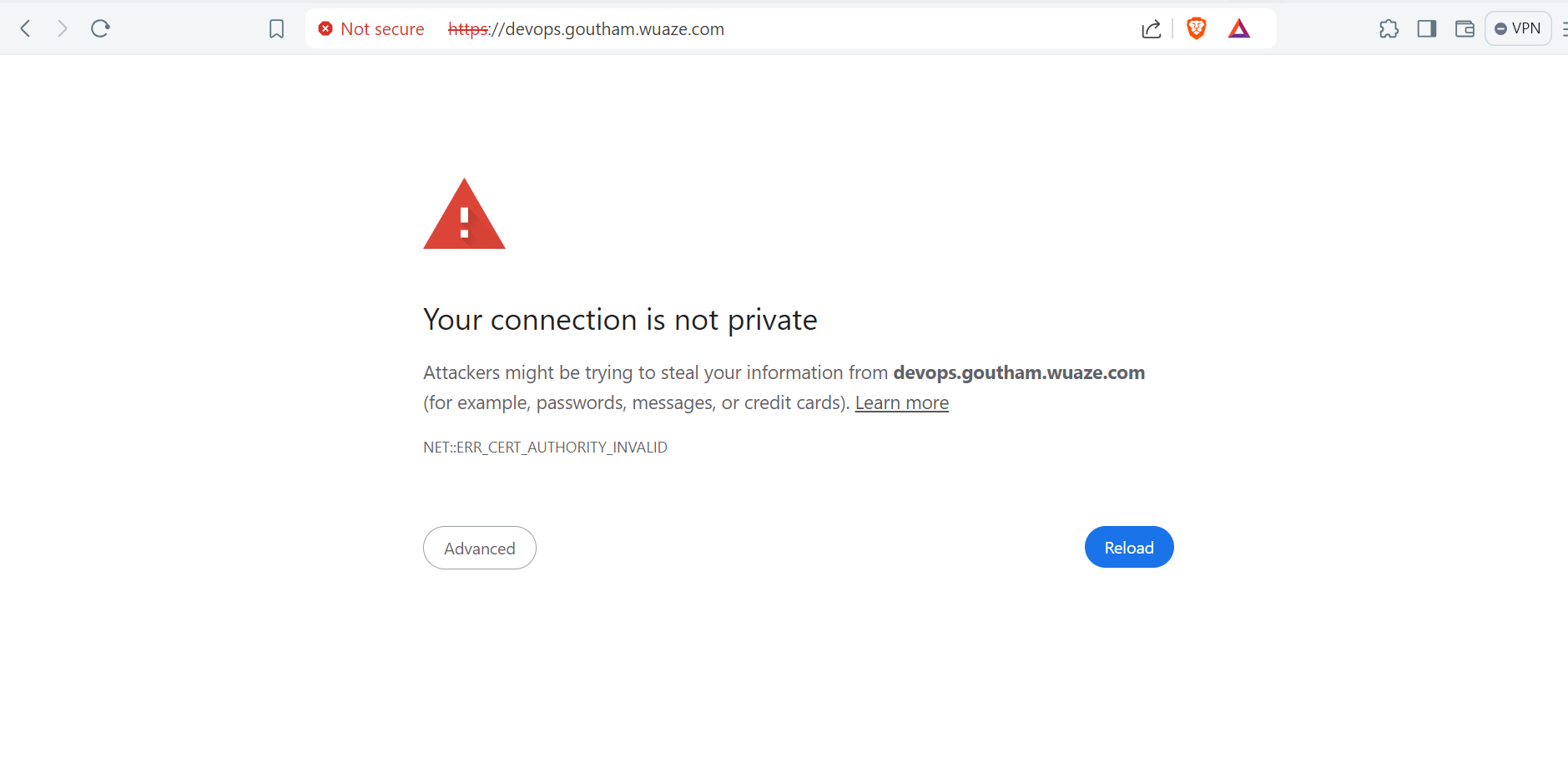
Lets Encrypt
Lets Encrypt is a trusted certificate Authority when cert manager generates a certificate signing request lets encrypt generates a challenge , cert-manager fulfills it and lets encrypt provides a certificate. Now Our Certificate is signed by Lets Encrypt means our public key is encrypted with CAs private key.
Now lets generate the same Issuer as Lets Encrypt and a Certificate request.
# Issuer.yaml
apiVersion: cert-manager.io/v1
kind: ClusterIssuer
metadata:
name: letsencrypt-cluster-issuer
spec:
acme:
server: https://acme-v02.api.letsencrypt.org/directory
email: gouthamkorla1023@gmail.com
privateKeySecretRef:
name: letsencrypt-cluster-issuer-key
solvers:
- http01:
ingress:
class: nginx
apiVersion: cert-manager.io/v1
kind: Certificate
metadata:
name: nginx-app
namespace: default
spec:
dnsNames:
- devops.goutham.wuaze.com
secretName: nginx-app-tls
issuerRef:
name: letsencrypt-cluster-issuer
kind: ClusterIssuer
Now replacing the nginx-app-tls secret name in the ingress resource provides
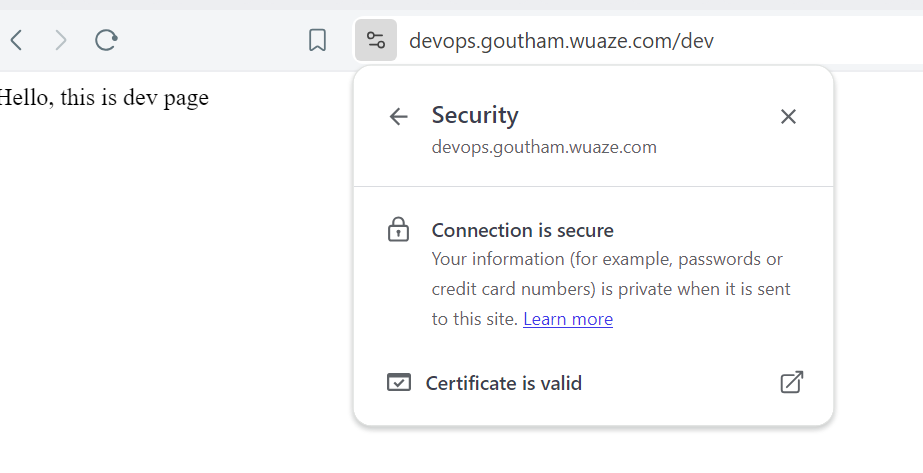
That's it this is my simple secure EKS Project. Hope you liked it. Thanks for reading my article have a great day.
Subscribe to my newsletter
Read articles from KORLA GOUTHAM directly inside your inbox. Subscribe to the newsletter, and don't miss out.
Written by

KORLA GOUTHAM
KORLA GOUTHAM
I am an Undergraduate having having a good Knowledge in Frontend development with React.js,competetive programming with C++, AWS fundementals.